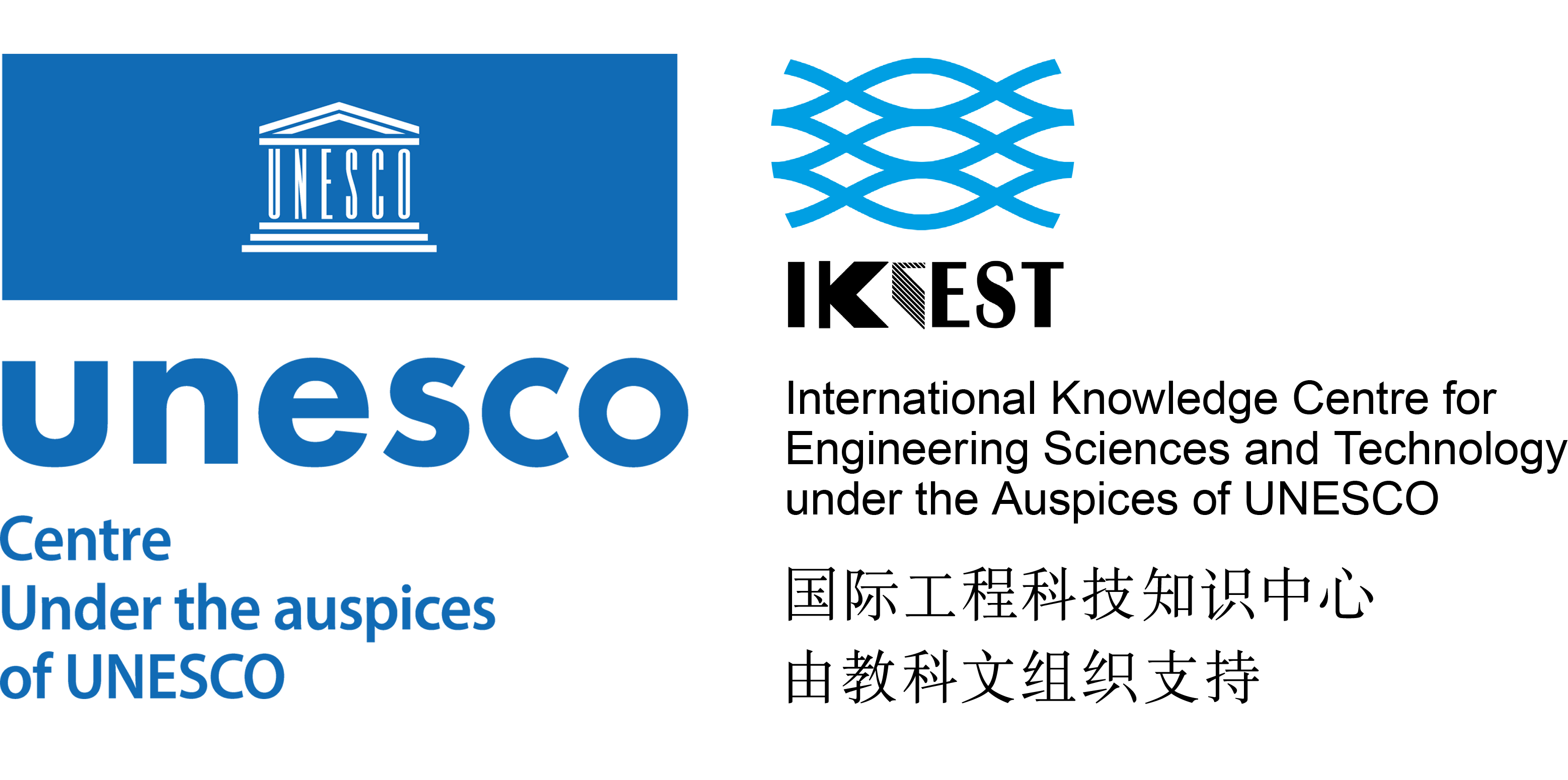Journal
Please choose volume & issue:
-
Explicit stress integration with streamlined drift reduction
Keywords:Explicit stress integration;Stress point method;Drift correction;Runge-kutta methods;Abstracts:The paper proposes an efficient method of drift correction in explicit stress integration schemes. The new method does not require significant changes to existing implementations and may, in fact, be regarded as a streamlining modification to standard drift correction schemes which may be used in tandem.
-
Automatic three-dimensional geometry and mesh generation of periodic representative volume elements for matrix-inclusion composites
Keywords:Periodic mesh;Conforming mesh;Random sequential absorption;Representative volume element;Meshing strategy;Homogenization;Matrix-inclusion composite;Abstracts:This paper introduces an efficient method to automatically generate and mesh a periodic three-dimensional microstructure for matrix-inclusion composites. Such models are of major importance in the field of computational micromechanics for homogenization purposes utilizing unit cell models. The main focus of this contribution is on the creation of cubic representative volume elements (RVEs) featuring a periodic geometry and a periodic mesh topology suitable for the application of periodic boundary conditions in the framework of finite element simulations. Our method systematically combines various meshing tools in an extremely efficient and robust algorithm. The RVE generation itself follows a straightforward random sequential absorption approach resulting in a randomized periodic microstructure. Special emphasis is placed on the discretization procedure to maintain a high quality mesh with as few elements as possible, thus, manageable for computer simulations applicable to high volume concentrations, high number of inclusions and complex inclusion geometries. Examples elucidate the ability of the proposed approach to efficiently generate large RVEs with a high number of anisotropic inclusions incorporating extreme aspect ratios but still maintaining a high quality mesh and a low number of elements.
-
An effective multi-objective discrete grey wolf optimizer for a real-world scheduling problem in welding production
Keywords:Welding scheduling;Multi-objective evolutionary algorithm;Controllable processing times;Sequence dependent setup times;Transportation times;Grey wolf optimizer;Abstracts:This paper aims to provide a solution method for a real-world scheduling case from a welding process, which is one of the important processes in modern industry. The unique characteristic of the welding scheduling problem (WSP) is that multiple machines can process one operation at a time. Thus, WSP is a new scheduling problem. We first formulate a new multi-objective mixed integer programming model for this WSP based on a comprehensive investigation. This model involves some realistic constraints, controllable processing times (CPT), sequence dependent setup times (SDST) and job dependent transportation times (JDTT). Then we propose a multi-objective discrete grey wolf optimizer (MODGWO) considering not only production efficiency but also machine load on this real-world scheduling case. The solution is encoded as a two-part representation including a permutation vector and a machine assignment matrix. A reduction machine load strategy is used to adjust the number of machines aiming to minimize the machine load. To evaluate the effectiveness of the proposed MODGWO, we compare it with other well-known multi-objective evolutionary algorithms including NSGA-II and SPEA2 on a set of instances. Experimental results demonstrate that the proposed MODGWO is superior to the compared algorithms in terms of convergence, spread and coverage on most instances. Finally, MODGWO is successfully applied to this real-world WSP. This implies that the proposed model is feasible and the proposed algorithm can solve this real-world scheduling problem very well.
-
Optimization of laser welding process parameters of stainless steel 316L using FEM, Kriging and NSGA-II
Keywords:Laser welding;Process parameters optimization;Finite element method;Kriging;NSGA-II;Abstracts:Laser welding process parameters have significant effects on the welding bead profile and quality of the welding joint. This paper proposes an integration method of process parameters optimization using finite element method (FEM), Kriging metamodels and nondominated sorting genetic algorithm II (NSGA-II) in laser welding for stainless steel 316L. The process parameters in this study are laser power (LP), welding speed (WS) and laser focal position (LF). Firstly, a three-dimensional thermal finite element model is developed to obtain the simulated results of bead width (BW) and depth of penetration (DP). Then, Kriging metamodels are constructed to reflect the relationship between input process parameters and output responses. Finally, NSGA-II is used to search for multi-objective Pareto optimal solutions. In addition, the main effects and contribution rates of multiple process parameters on welding bead profile are analyzed. The results of verification experiments indicate that the optimal process parameters are effective and reliable for producing expected welding bead profile.
-
Adaptive classification under computational budget constraints using sequential data gathering
Keywords:Classification;SUMO Toolbox;Sequential design;Surrogate modeling;Abstracts:Classification algorithms often handle large amounts of labeled data. When a label is the result of a very expensive computer experiment (in terms of computational time), sequential selection of samples can be used to limit the overall cost of acquiring the labeled data. This paper outlines the concept of sequential design for classification, and the extension of an existing state-of-the-art research platform for surrogate modeling to handle classification problems with sequential design. The capabilities of the platform are illustrated on a number of use cases including real-world applications such as an ElectroMagnetic Compatibility (EMC) and a Computational Fluid Dynamics (CFD) problem. The CFD problem also illustrates how classification can be used together with regression techniques to solve multi-objective constrained optimization problems of complex systems.
-
Grey wolf optimizer for unmanned combat aerial vehicle path planning
Keywords:Unmanned combat aerial vehicle;Path planning;Grey wolf optimizer;Abstracts:Unmanned combat aerial vehicle (UCAV) path planning is a fairly complicated global optimum problem, which aims to obtain an optimal or near-optimal flight route with the threats and constraints in the combat field well considered. A new meta-heuristic grey wolf optimizer (GWO) is proposed to solve the UCAV two-dimension path planning problem. Then, the UCAV can find the safe path by connecting the chosen nodes of the two-dimensional coordinates while avoiding the threats areas and costing minimum fuel. Conducted simulations show that the proposed method is more competent for the UCAV path planning scheme than other state-of-the-art evolutionary algorithms considering the quality, speed, and stability of final solutions.
-
Automatic mesh generation for 3D smoothed finite element method (S-FEM) based on the weaken-weak formulation
Keywords:Mesh generation;FEM;S-FEM, 3D;Weaken-weak (W2) formulation;Connectivity;Smoothing domains;Abstracts:The creation of smoothing domains based on a mesh of problem domain is one of the key tasks in the smoothed finite element method (S-FEM), especially for three dimensional (3D) problems. Traditionally, the smoothed strains in the 3D S-FEM implementations are calculated by using a volume-weighted average of the “raw” strains (strains in finite element method (FEM)) on the neighboring elements. In order to use the standard formulation based on the weaken-weak (
W 2) formulation, we need to know not only the smoothing domains, but also the area and the outer normal vector of each surface as well as volume of smoothing domains. This paper is the first time to present a comprehensive procedure and efficient algorithms for creating smoothing domains systematically with all the necessary information required for the surface-integral needed in the smoothed strain calculations. Several algorithms are given, including two for establishing connectivity lists among nodes, edges, faces and elements and three for the generation of smoothing domains for various S-FEM models. Besides, we introduce a simple but efficient approach to determine the outer normal vector of segmental surfaces for each smoothing domain. Three examples are presented to show the effectiveness of the given algorithms. -
A computational framework for regional seismic simulation of buildings with multiple fidelity models
Keywords:Seismic damage simulation;Multi-fidelity models;Distributed computing;GPU;City-wide scale;Abstracts:Regional seismic damage simulation of buildings can potentially reveal possible consequences that are important for disaster mitigation and decision making. However, such a simulation involving all the buildings in a region can be computationally intensive. In this study, a computational framework using a network of distributed computers, each equipped with graphics processing units (GPUs), is proposed. The computational framework includes two types of structural fidelity models. For high-fidelity models, which are employed to analyze complex and/or important buildings, an efficient GPU-based linear equation solver is developed and incorporated in OpenSees, an open source computational platform commonly used for structural and earthquake engineering simulations of buildings and civil infrastructures. To handle the large number of computationally intensive high-fidelity structural models in a region, a dynamic load balancing strategy is designed to distribute the computational tasks among the available resources. For moderate-fidelity models, which are used to model regular building structures, a GPU-based tool is developed to accelerate the simulation. A static load balancing strategy is designed to distribute the computational tasks among the GPUs. To demonstrate the potential for a cost-effective and flexible computing paradigm for regional seismic simulation, the computational framework is applied to perform seismic simulation of a virtual city with 50 high-fidelity structural models and 100,000 moderate-fidelity building models.
-
Estimating inherent deformation in thin-plate Al-alloy joint by means of inverse analysis with the help of cutting technique
Keywords:Inverse analysis;Inherent deformation;Welding deformation;Buckling;Abstracts:The elastic finite element method based on inherent strain theory has been recognized as an effective tool to estimate the total welding deformation for large and complex welded structures. When this computational approach is employed to predict welding deformation in a weldment, one prerequisite is that the inherent deformations of each welded joint included in the welded structure should be known beforehand. The inverse analysis method based on the combination of measuring technology and finite element method can be used to obtain the inherent deformations for various welded joints. However, if buckling distortion occurs in a welded joint, it will be difficult for this method to accurately obtain the inherent deformations especially in thin-plate joints. To overcome this difficulty, an improved inverse analysis method with the help of cutting technique was developed in the current study. The effectiveness of the proposed method was demonstrated through obtaining the inherent deformations in an Al-alloy thin-plate joint with buckling distortion.
-
Finite element mapping for incompatible FE meshes of composite structures
Keywords:Mapping;Finite element analysis;Finite element data transfer;Composite structures;Manufacturing chain simulation;Integrated simulation approach;Structural analysis;Abstracts:Finite element analysis (FEA) of structural composites is mostly based on an as-designed geometry and input data. As-designed input data do not consider the manufacturing processes. For an as-built structural simulation of composites, it is important to integrate manufacturing process data into the structural analysis. Therefore, mapping algorithms are needed to transfer and process data between different process and structural simulation steps considering the application of different finite elements and media discretization for the individual simulation steps. This paper considers a mapping algorithm based on a bucket sort algorithm, shape interpolation functions of finite elements and internal fiber architectures of composite materials with a subsequent material properties prediction. The proposed algorithm is applicable for unidirectional composites as well as for non-crimped, woven and braided fabrics. Particular, it is shown how fiber orientation, as vector value of finite elements, is sensible for a data transfer between meshes with out-of-plane material defects. This integrated simulation approach is applied on a generic demonstrator geometry and aerospace component geometries. The implementation is realized within a new developed simulation platform for composites structures, from process up to structural simulations.
Hot Journals
- Risk Breakdown Matrix for Risk-Based Inspection of Transportation Infrastructure Projects
- Social Control in Outsourced Architectural and Engineering Design Consulting Projects: Behavioral Consequences and Motivational Mechanism
- 2022 Best Paper Award
- Hold-Ups and Failures in Negotiated Order: Unearthing the Nuances of Rework Causation in Construction
- Prevalence and Risk Factors for Poor Mental Health and Suicidal Ideation in the Nigerian Construction Industry
- CFRP–Cable-Stayed Bridge Hybrid with Partial Suspension and a Span Exceeding 3,000 m: Concept, Optimization, and Construction
- Impact of Wind Load Characteristics on Computed Bridge Stay-Cable Forces Used for Bridge Health Monitoring
- Weak-End and Frequency Detection of Elastically Supported Bridges by Contact Residual Response of Two-Axle Test Vehicle in a Round Trip
- Development of Performance-Based Fragility Curves of Coastal Bridges Subjected to Extreme Wave-Induced Loads
- An Analytical Model to Evaluate Short- and Long-Term Performances of Post-Tensioned Concrete Box-Girder Bridges Rehabilitated by an Ultrahigh-Performance Concrete Overlay
- Three-Dimensional Velocity Distribution in Straight Smooth Channels Modeled by Modified Log-Law
- Experimental Investigation on Flow Past Two and Three Side-by-Side Inclined Cylinders
- An Experimental Investigation of Rotor–Box Aerodynamic Interaction 1
- Modeling Gas–Liquid Flow Between Rotating and Nonrotating Annular Disks
- Entry Length Requirements for Two- and Three-Dimensional Laminar Couette–Poiseuille Flows
Advanced Materials (3,745)
- Structured Perovskite Light Absorbers for Efficient and Stable Photovoltaics
- Strategies for High‐Performance Solid‐State Triplet–Triplet‐Annihilation‐Based Photon Upconversion
- Atomic Engineering Catalyzed MnO2 Electrolysis Kinetics for a Hybrid Aqueous Battery with High Power and Energy Density
- Crystal Adaptronics: Global Performance Indices for Dynamic Crystals as Organic Thermal Actuators (Adv. Mater. 20/2020)
- Enlightening Materials with Photoswitches
Acta Astronautica (1,768)
- Mixed-integer trajectory optimization with no-fly zone constraints for a hypersonic vehicle
- Adaptive control design for active Pogo suppression of large strap-on liquid launch vehicles
- Machine learning based approach for modeling and forecasting of GPS–TEC during diverse solar phase periods
- Effect of two-dimensional micro-cavity surface on hypersonic boundary layer
- Investigation on burning behaviors of aluminum agglomerates in solid rocket motor with detailed combustion model








 User Center
User Center My Training Class
My Training Class Feedback
Feedback





